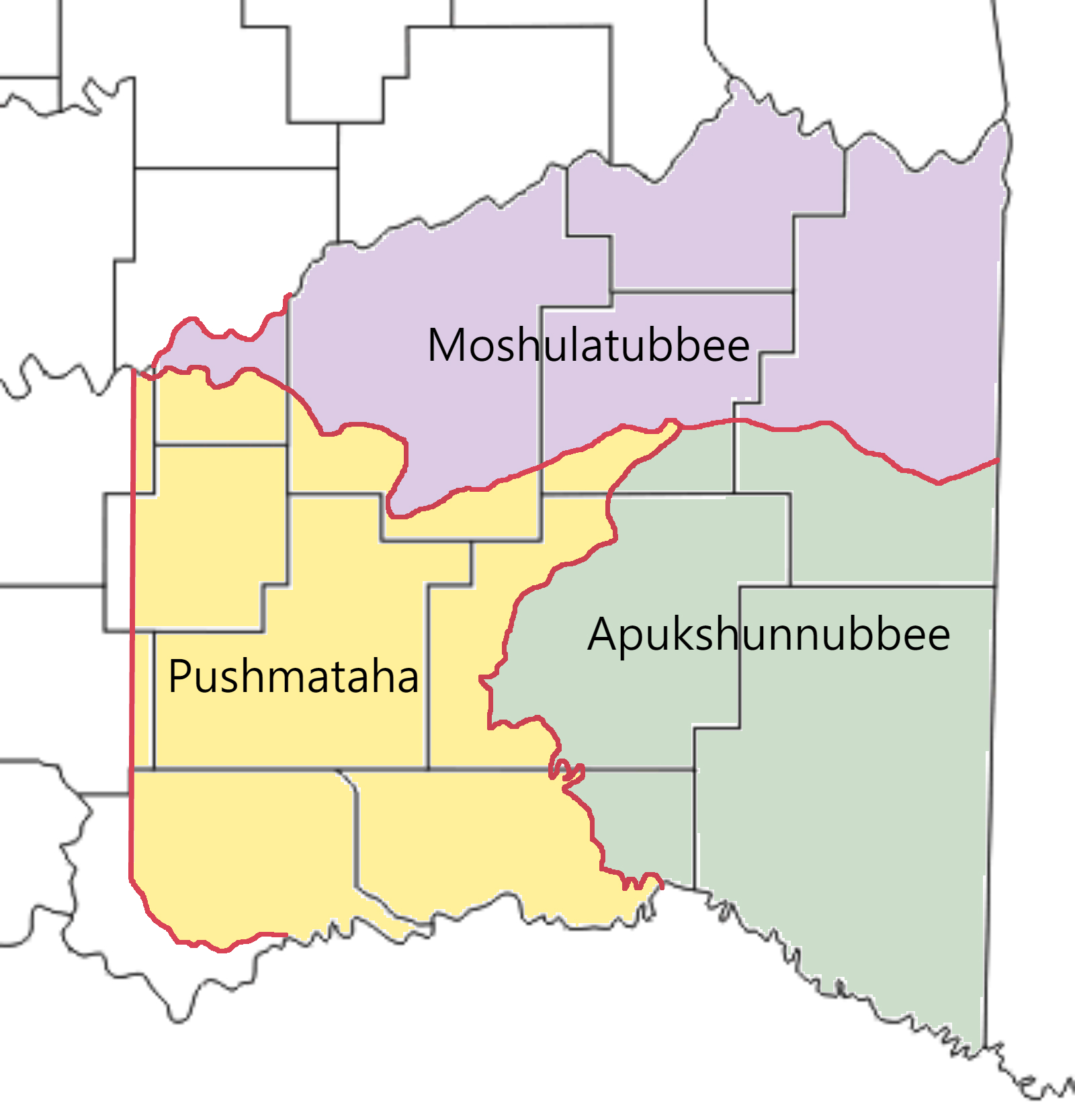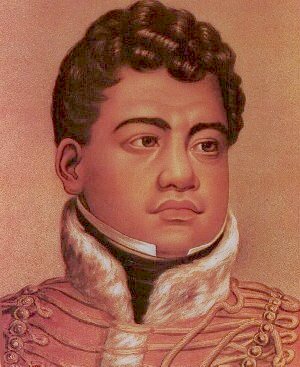|
Fort Coffee, Oklahoma
Fort Coffee is a town in Le Flore County, Oklahoma, United States. Originally constructed as a U. S. Army fort in 1834, it was named for U. S. General John Coffee, a veteran of the Seminole Wars.Dennis Peterson. "Fort Coffee." ''Encyclopedia of Oklahoma History and Culture''. Retrieved September 16, 2012. It is part of the -Oklahoma Metropolitan Statistical Area. The population was 424 at the 2010 census, a gain of 2.9 percent over the figure of 412 in 2000. < ...
|
Town
A town is a type of a human settlement, generally larger than a village but smaller than a city. The criteria for distinguishing a town vary globally, often depending on factors such as population size, economic character, administrative status, or historical significance. In some regions, towns are formally defined by legal charters or government designations, while in others, the term is used informally. Towns typically feature centralized services, infrastructure, and governance, such as municipal authorities, and serve as hubs for commerce, education, and cultural activities within their regions. The concept of a town varies culturally and legally. For example, in the United Kingdom, a town may historically derive its status from a market town designation or City status in the United Kingdom, royal charter, while in the United States, the term is often loosely applied to incorporated municipality, municipalities. In some countries, such as Australia and Canada, distinction ... [...More Info...] [...Related Items...] OR: [Wikipedia] [Google] [Baidu] |
Moshulatubbee District
Moshulatubbee District was one of three provinces, or districts, comprising the former Choctaw Nation in the Indian Territory. Also called the First District, it encompassed the northern one-third of the nation. In some historic records it is spelled Mushulatubbe. The Moshulatubbee District was named in honor of Chief Moshulatubbee, a Choctaw Indian warrior and statesman. Moshulatubbee was chief of the ''Okla Tannap'' ("Lower Towns") District in the original Choctaw Nation of the Southeast. Many Choctaw from that period referred to the Moshulatubbee District as the Okla Tannap District. The other two districts were known as Apukshunnubbee and Pushmataha, also named after important leaders. History The districts were established when the Choctaw Nation removed to the Indian Territory. These districts were intended as areas for members of the three major clans, or groupings of Choctaw who comprised the nation. In time, the clan affiliations and allegiances were reduced after t ... [...More Info...] [...Related Items...] OR: [Wikipedia] [Google] [Baidu] |
Pacific Islander Americans
Pacific Islander Americans (also colloquially referred to as Islander Americans) are Americans who are of Pacific Islander ancestry (or are descendants of the Indigenous peoples of Oceania). For its purposes, the United States census also counts Aboriginal Australians as part of this group. Pacific Islander Americans make up 0.5% of the US population including those with partial Pacific Islander ancestry, enumerating about 1.4 million people. The largest ethnic subgroups of Pacific Islander Americans are Native Hawaiians, Samoan Americans, Samoans, and Chamorro people, Chamorros. Much of the Pacific Islander population resides in Hawaii, Alaska, California, Utah, and Texas. Pacific Islanders may be considered Oceanian Americans, but this group may include Australians and New Zealander-origin people, who can be of non-Pacific Islander ethnicity. Many Pacific Islander Americans are mixed with other races, especially Europeans and Asians, due to Pacific Islanders being a small p ... [...More Info...] [...Related Items...] OR: [Wikipedia] [Google] [Baidu] |
Native Hawaiian
Native Hawaiians (also known as Indigenous Hawaiians, Kānaka Maoli, Aboriginal Hawaiians, or simply Hawaiians; , , , and ) are the Indigenous peoples of Oceania, Indigenous Polynesians, Polynesian people of the Hawaiian Islands. Hawaiʻi was settled at least 800 years ago by Polynesians who sailed from the Society Islands. The settlers gradually became detached from their homeland and developed a distinct Hawaiian culture and identity in their new home. They created new religious and cultural structures, in response to their new circumstances and to pass knowledge from one generation to the next. Hence, the Hawaiian religion focuses on ways to live and relate to the land and instills a sense of community. The Hawaiian Kingdom was formed in 1795, when Kamehameha the Great, of the then-independent Hawaii (island), island of Hawaiʻi, conquered the independent islands of Oʻahu, Maui, Molokaʻi, and Lānaʻi to form the kingdom. In 1810, Kauaʻi and Niʻihau joined the Kingdom, the ... [...More Info...] [...Related Items...] OR: [Wikipedia] [Google] [Baidu] |
Asian Americans
Asian Americans are Americans with Asian diaspora, ancestry from the continent of Asia (including naturalized Americans who are Immigration to the United States, immigrants from specific regions in Asia and descendants of those immigrants). Although this term had historically been used for all the indigenous peoples of the continent of Asia, the usage of the term "Asian" by the United States Census Bureau denotes a racial category that includes people with origins or ancestry from East Asia, South Asia, Southeast Asia, and Central Asia. It excludes people with ethnic origins from West Asia, who were historically classified as 'white' and will be categorized as Middle Eastern Americans starting from the 2030 United States census, 2030 census. Central Asians in the United States, Central Asian ancestries (including Afghans, Afghan, Kazakhs, Kazakh, Kyrgyz people, Kyrgyz, Tajiks, Tajik, Turkmens, Turkmen, and Uzbeks, Uzbek) were previously not included in any racial category but h ... [...More Info...] [...Related Items...] OR: [Wikipedia] [Google] [Baidu] |
Alaska Native
Alaska Natives (also known as Native Alaskans, Alaskan Indians, or Indigenous Alaskans) are the Indigenous peoples of the Americas, Indigenous peoples of Alaska that encompass a diverse arena of cultural and linguistic groups, including the Iñupiat, Yupik peoples, Yupik, Aleut people, Aleut, Eyak people, Eyak, Tlingit people, Tlingit, Haida people, Haida, Tsimshian, and various Alaskan Athabaskans, Northern Athabaskan, as well as Russian Creoles. These groups are often categorized by their distinct language families. Many Alaska Natives are enrolled in federally recognized Alaska Native tribal entities, which are members of 13 Alaska Native Regional Corporations responsible for managing land and financial claims. The migration of Alaska Natives' ancestors into the Alaskan region occurred thousands of years ago, likely in more than one wave. Some present-day groups descend from a later migration event that also led to settlement across northern North America, with these popula ... [...More Info...] [...Related Items...] OR: [Wikipedia] [Google] [Baidu] |
Native Americans In The United States
Native Americans (also called American Indians, First Americans, or Indigenous Americans) are the Indigenous peoples of the Americas, Indigenous peoples of the United States, particularly of the Contiguous United States, lower 48 states and Alaska. They may also include any Americans whose origins lie in any of the indigenous peoples of North or South America. The United States Census Bureau publishes data about "American Indians and Alaska Natives", whom it defines as anyone "having origins in any of the original peoples of North and South America ... and who maintains tribal affiliation or community attachment". The census does not, however, enumerate "Native Americans" as such, noting that the latter term can encompass a broader set of groups, e.g. Native Hawaiians, which it tabulates separately. The European colonization of the Americas from 1492 resulted in a Population history of Indigenous peoples of the Americas, precipitous decline in the size of the Native American ... [...More Info...] [...Related Items...] OR: [Wikipedia] [Google] [Baidu] |
Non-Hispanic Or Latino African Americans
African Americans, also known as Black Americans and formerly also called Afro-Americans, are an American racial and ethnic group that consists of Americans who have total or partial ancestry from any of the Black racial groups of Africa. African Americans constitute the second largest ethno-racial group in the U.S. after White Americans. The term "African American" generally denotes descendants of Africans enslaved in the United States. In 2023, an estimated 48.3 million people self-identified as Black, making up 14.4% of the country’s population. This marks a 33% increase since 2000, when there were 36.2 million Black people living in the U.S. African-American history began in the 16th century, with Africans being sold to European slave traders and transported across the Atlantic to the Western Hemisphere. They were sold as slaves to European colonists and put to work on plantations, particularly in the southern colonies. A few were able to achieve freedom through ... [...More Info...] [...Related Items...] OR: [Wikipedia] [Google] [Baidu] |
Non-Hispanic Or Latino Whites
Non-Hispanic Whites, also referred to as White Anglo Americans or Non-Latino Whites, are White Americans who are classified by the United States census as "White people, White" and not of White Hispanic and Latino Americans, Hispanic or Latino origin. According to annual estimates from the United States Census Bureau, as of July 1, 2023, non-Hispanic Whites comprised approximately 58.4% of the Demographics of the United States, U.S. population. Although non-Hispanic Whites remain the largest single Race and ethnicity in the United States, racial and ethnic group in the United States and still constitute a majority of the population, their share has declined significantly over the past eight decades. In 1940 United States census, 1940, they comprised approximately 89.8% of the total population, illustrating the extent of the demographic transformation that has occurred since the mid-20th century. This decline has been attributed to factors such as lower Birth rate, birth rates am ... [...More Info...] [...Related Items...] OR: [Wikipedia] [Google] [Baidu] |
Robert S
The name Robert is an ancient Germanic given name, from Proto-Germanic "fame" and "bright" (''Hrōþiberhtaz''). Compare Old Dutch ''Robrecht'' and Old High German ''Hrodebert'' (a compound of '' Hruod'' () "fame, glory, honour, praise, renown, godlike" and ''berht'' "bright, light, shining"). It is the second most frequently used given name of ancient Germanic origin.Reaney & Wilson, 1997. ''Dictionary of English Surnames''. Oxford University Press. It is also in use as a surname. Another commonly used form of the name is Rupert. After becoming widely used in Continental Europe, the name entered England in its Old French form ''Robert'', where an Old English cognate form (''Hrēodbēorht'', ''Hrodberht'', ''Hrēodbēorð'', ''Hrœdbœrð'', ''Hrœdberð'', ''Hrōðberχtŕ'') had existed before the Norman Conquest. The feminine version is Roberta. The Italian, Portuguese, and Spanish form is Roberto. Robert is also a common name in many Germanic languages, including En ... [...More Info...] [...Related Items...] OR: [Wikipedia] [Google] [Baidu] |
Spiro, Oklahoma
Spiro is a town in Le Flore County, Oklahoma, Le Flore County, Oklahoma, United States. It is part of the Fort Smith, Arkansas-Oklahoma Fort Smith metropolitan area, Metropolitan Statistical Area. The population was 2,164 at the 2010 census, a 2.8 percent decline from the figure of 2,227 recorded in 2000. Developed as a railroad station in an agricultural area in the late 19th century, the small town is notable for its proximity to the Spiro Mounds. This is a Mississippian culture center that was active from about 900 to 1450 CE that was part of a culture in Eastern Oklahoma and Western Arkansas. Today, the 80-acre site with several earthwork mounds is preserved as Oklahoma's only State Archeological Park and one of North America's most important archaeological sites. It is the westernmost site of the expansive Mississippian culture, which had associated centers through the Mississippi and tributary river valleys. History In 1895 and 1896, the Kansas City, Pittsburg and Gulf Railr ... [...More Info...] [...Related Items...] OR: [Wikipedia] [Google] [Baidu] |





